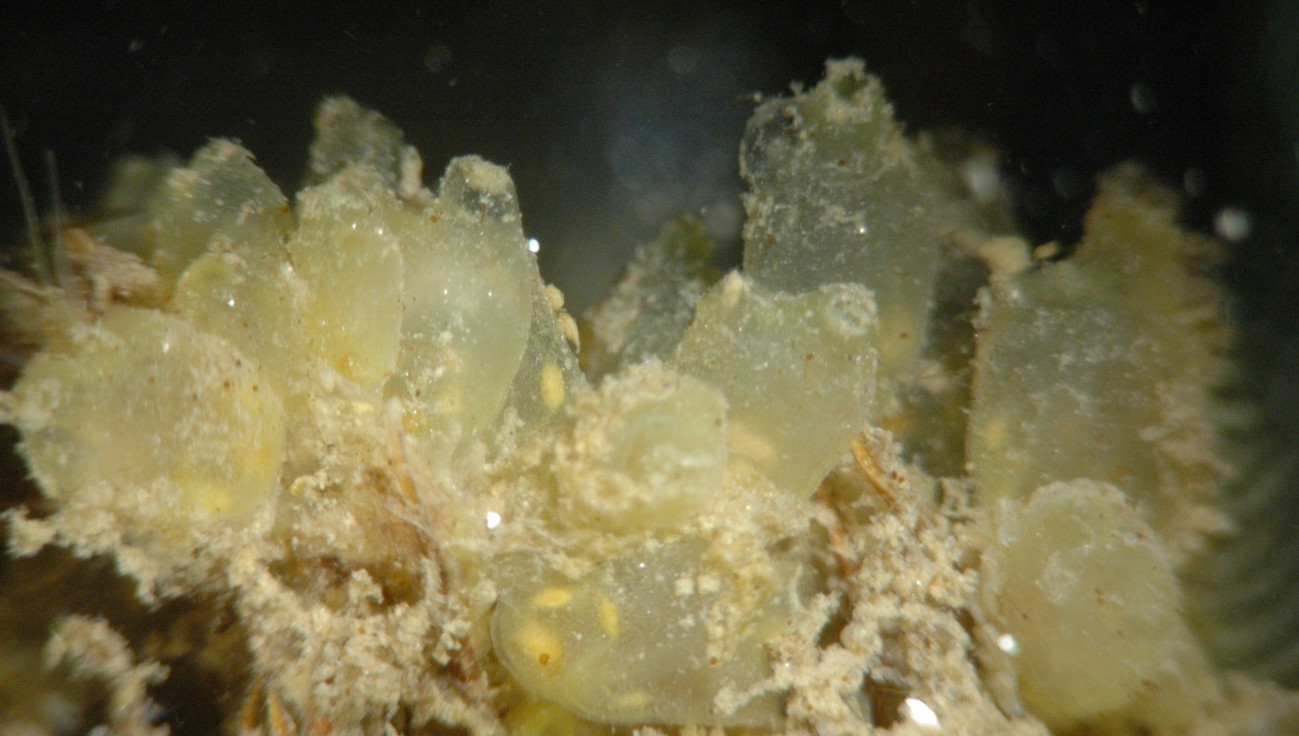How to Distinguish from Similar Species: Other small local social tunicates with similar configuration such as Metandrocarpa taylori are opaque, usually orange-red or brick red (sometimes yellowish), and the tunic does not narrow at the basal attachment point. Perophora japonica (found in Japan and introduced into Humboldt Bay in California) has star-shaped flattened yellow terminal buds on the stolons that are not found on P. annectens.
Geographical Range: SE Alaska to San Diego, CA
Depth Range: Lower midlittoral to 30 m
Habitat: Rocks, algae, and floats; more common on open coast.
Biology/Natural History: The zooids of this species may be well separated, or may be fairly closely packed together or their tunics may even be partially fused together. This species broods its larvae. Some of the darker yellow spots on the individuals above are likely larvae.
The zooids of a colony are genetically identical, formed by budding of the stolons. Individual zooids are hermaphroditic. In a related species the hormone thyroxin has been shown to enhance growth of the stolons while inhibiting formation of buds, which would presumably result in a colony of individuals which are more spread out from each other. Thiourea, on the other hand, inhibits stolon growth but stimulates bud formation. Growth of the stolons seems to be strongly affected by local electrical charges. In P. orientalis, stimulation of the neural ganglion alters the heartbeat. This alteration is passed on to neighboring zooids by the blood.
This species concentrates vanadium up to 9 ppt dry weight, mainly in blood cells.
In California these colonies grow rapidly in spring, sexually reproduce in summer or early fall, and degenerate over winter.
Though small, this translucent species is excellent for
studying heartbeat,
blood flow, ciliary beating on the pharyngeal basket, and
characteristics
of stolon
growth.
| Return to: | |||
| Main Page | Alphabetic Index | Systematic Index | Glossary |
References:
Dichotomous Keys:Carlton, 2007
Kozloff, 1987, 1996
General References:
Harbo,
1999
Johnson
and Snook, 1955
Kozloff,
1993
Lamb
and Hanby, 2005
Morris
et al., 1980
O'Clair
and O'Clair, 1998
Ricketts
et al., 1985
Scientific Articles:
Web sites:
General Notes and
Observations: Locations,
abundances, unusual behaviors:
Authors and Editors of Page:
Dave Cowles (2009): Created original page
CSS coding for page developed by Jonathan Cowles (2007)
